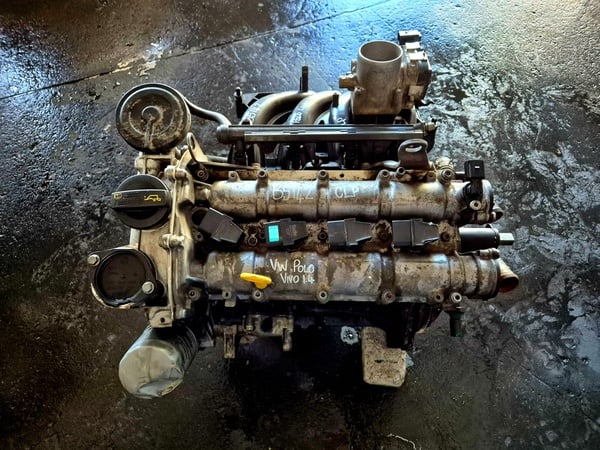Extend the lifespan of your clp engine with regular care.
Extend the lifespan of your clp engine with regular care.
Blog Article
Just How a Clp Engine Can Improve Efficiency in Numerous Industries
The development of CLP engines marks a considerable change in operational efficiency across various sectors, driven by their capability to enhance gas consumption and minimize downtime. Industries such as production and logistics stand to gain substantially from their durable design and consistent power result, which guarantee to improve procedures and enhance efficiency. As organizations significantly prioritize sustainability together with effectiveness, the function of CLP engines ends up being also a lot more vital. What continues to be to be seen is how these improvements will form the future landscape of commercial procedures and their impact on wider financial trends (clp engine).
Overview of CLP Engines
CLP engines, or Continual Liquid Propellant engines, stand for a significant advancement in propulsion technology, specifically for space applications. These engines make use of a continual feed system that enables the sustained expulsion of propellant, causing enhanced efficiency and efficiency contrasted to traditional solid or hybrid propulsion systems. By keeping a constant circulation of liquid propellant, CLP engines can achieve extra exact drive control, which is critical for maneuvering spacecraft in numerous goal circumstances.
The style of CLP engines incorporates advanced materials and ingenious gas monitoring systems. clp engine. This causes lowered weight and raised reliability, necessary variables for long-duration room objectives. The continual procedure lessens the risk of combustion instability, a typical obstacle in traditional rocket engines.

Advantages in Manufacturing
The manufacturing of Continual Liquid Propellant (CLP) engines offers numerous significant advantages that enhance both performance and cost-effectiveness. Among the primary benefits is the structured manufacturing process, which decreases the intricacy connected with conventional propulsion systems. By making use of fluid propellant, producers can achieve greater precision in engine performance, bring about enhanced energy result and minimized waste.
Furthermore, CLP engines facilitate a greater degree of modularity, allowing for easier combination into various manufacturing lines. This adaptability can dramatically reduce lead times and enhance general functional versatility. Making use of CLP modern technology likewise tends to reduce the need for considerable maintenance due to less moving parts, which converts into minimized downtime and functional costs.

Applications in Logistics
Leveraging Constant Liquid Propellant (CLP) engines in logistics provides significant advantages in operational performance and reliability. These engines supply a robust service for various transport requirements, enabling the seamless activity of items throughout huge go to my blog ranges. The intrinsic layout of CLP engines allows for consistent power result, which converts right into smoother and a lot more foreseeable transport routines.
One of the essential applications of CLP engines in logistics remains in durable products transportation, where they can drive both ground and airborne automobiles. Their capacity to preserve high efficiency under varying tons conditions guarantees that delivery timelines are satisfied, consequently enhancing customer contentment. Furthermore, CLP engines can be incorporated into automated logistics systems, promoting real-time tracking and maximizing route preparation.
Moreover, the longevity of CLP engines reduces maintenance downtime, enabling logistics business to maximize their functional abilities. This is especially helpful in warehousing procedures, where efficiency in taking care of and carrying goods is important. As logistics remains to evolve, the combination of CLP engines represents a forward-thinking strategy that not only boosts performance yet likewise supports the industry's expanding needs for dependability and speed.
Influence on Power Efficiency
How do Continual Liquid Propellant (CLP) engines boost power effectiveness in transport? CLP engines make use of a regular useful source flow of fluid gas, enhancing combustion procedures and maintaining a stable drive result. This design reduces energy losses connected with typical combustion engines, where fuel shipment can differ and result in ineffectiveness.
The constant operation of CLP engines permits an extra reliable thermal cycle, resulting in greater certain impulse compared to traditional engines. clp engine. This converts to decreased fuel usage for the very same amount of job done, considerably lowering operational expenses across various transportation sectors, including air travel and maritime markets
Moreover, the ability of CLP engines to maintain optimum performance under varying load problems reduces the demand for frequent velocity and deceleration, better improving gas effectiveness. Enhanced energy effectiveness not just adds to set you back savings but likewise results in lower greenhouse gas discharges, aligning with worldwide sustainability goals.
Future Trends and Innovations
Arising advancements in Continuous Fluid Propellant (CLP) engine modern technology assurance to reinvent the landscape of transport efficiency and sustainability. As sectors pivot toward greener choices, CLP engines stand at the leading edge, incorporating ingenious materials and style methods that improve performance while minimizing official source ecological impact.
Among the most promising patterns is the adoption of crossbreed systems that incorporate CLP engines with renewable power resources. This harmony can optimize gas consumption and lower exhausts, lining up with worldwide sustainability objectives. Furthermore, developments in computational liquid characteristics (CFD) are facilitating the style of more aerodynamically efficient engines, resulting in decreased drag and boosted gas performance.
Moreover, the advancement of wise monitoring systems is set to improve operational performances. These systems utilize data analytics and IoT innovation to maximize engine performance in real-time, ensuring that the engines operate within their most effective criteria.
As research study remains to discover different propellant formulations-- such as biofuels and synthetic fuels-- the future of CLP engines looks promising. By using these technologies, markets can not just enhance their performance yet likewise contribute dramatically to a cleaner, a lot more lasting future in transport.
Verdict
In final thought, CLP engines stand for a substantial innovation in efficiency across numerous industries. The assimilation of sophisticated products and fewer relocating parts reduces upkeep demands, while alignment with sustainability objectives positions CLP engines as an essential technology for the future.
Report this page